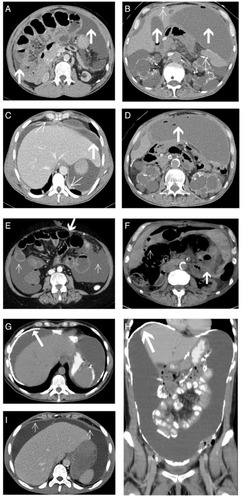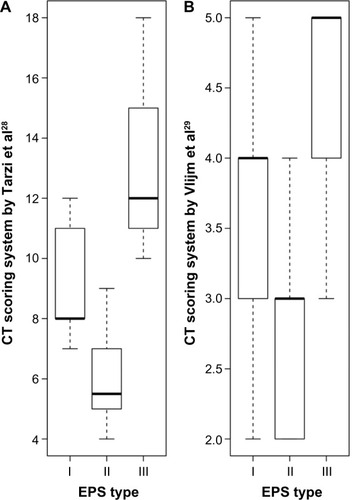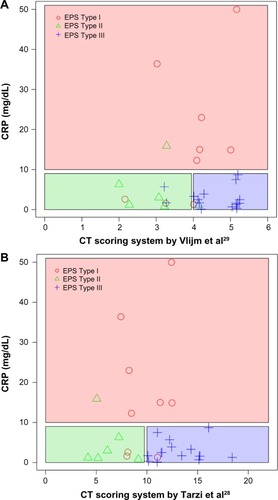Figures & data
Table 1 CT scan scoring system by Tarzi et al
Table 2 Cut-off values for a positive CT scan, using the CT scan scoring parameters of Vlijm et al
Table 3 Clinical data of study population
Figure 1 Cross-sectional abdominal CT images of EPS Type I–III patients.
Abbreviations: CT, computed tomography; EPS, encapsulating peritoneal sclerosis; PEEL, peritonectomy and enterolysis; CM, contrast medium.

Table 4 Results of the CT scoring system in our study population using both established CT scoring systems
Table 5 CT findings in different macroscopic phenotypes of EPS (n=30)
Figure 2 CT score of patients with different macroscopic phenotypes (mean ± SD) and CRP levels (median with IQR) in patients with EPS Type I–III.
Abbreviations: CT, computed tomography; SD, standard deviation; CRP, C-reactive protein; IQR, interquartile range; EPS, encapsulating peritoneal sclerosis.

Figure 3 Prediction of the macroscopic phenotype based on the CT scores
Abbreviations: CT, computed tomography; CRP, C-reactive protein; EPS, encapsulating peritoneal sclerosis.

